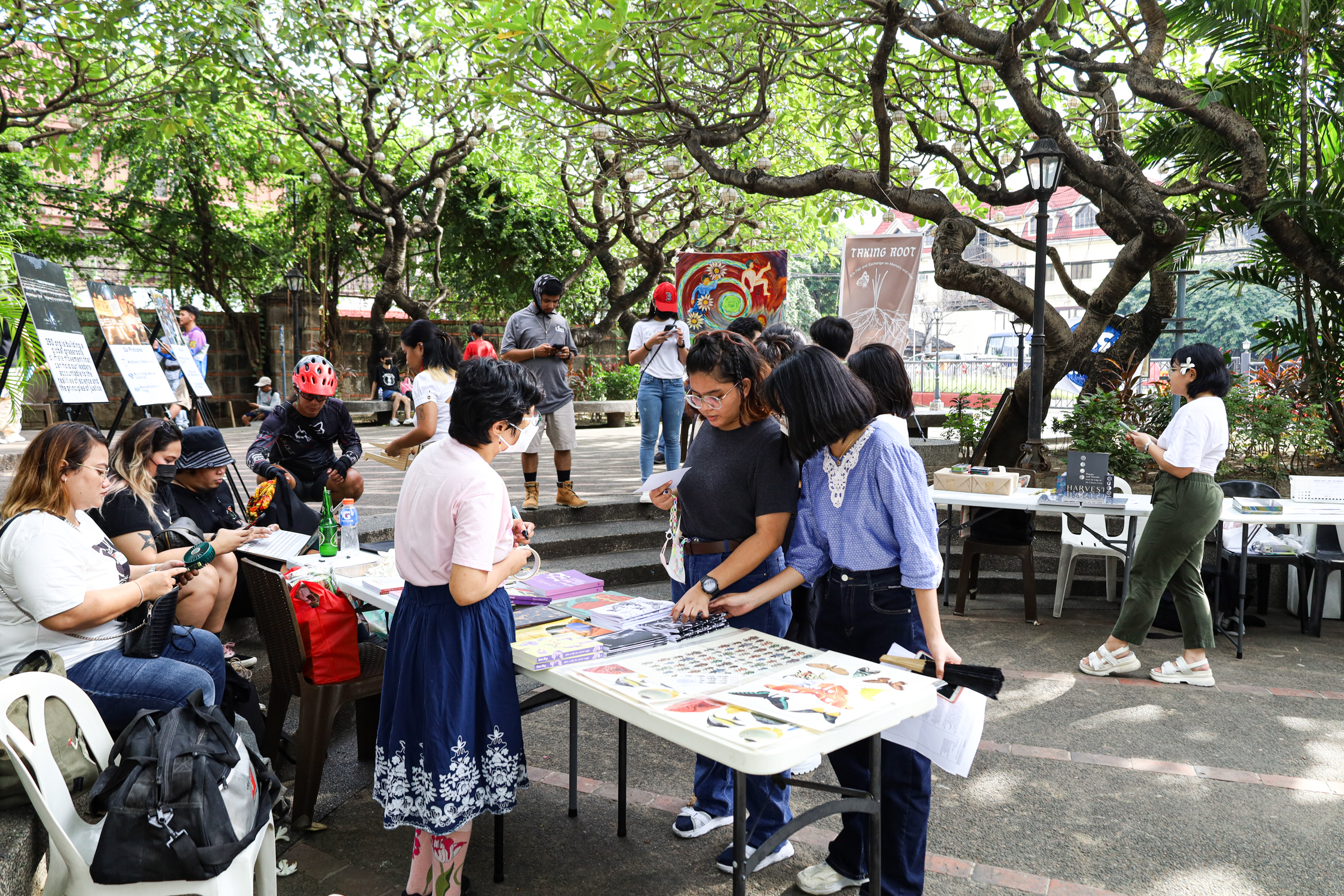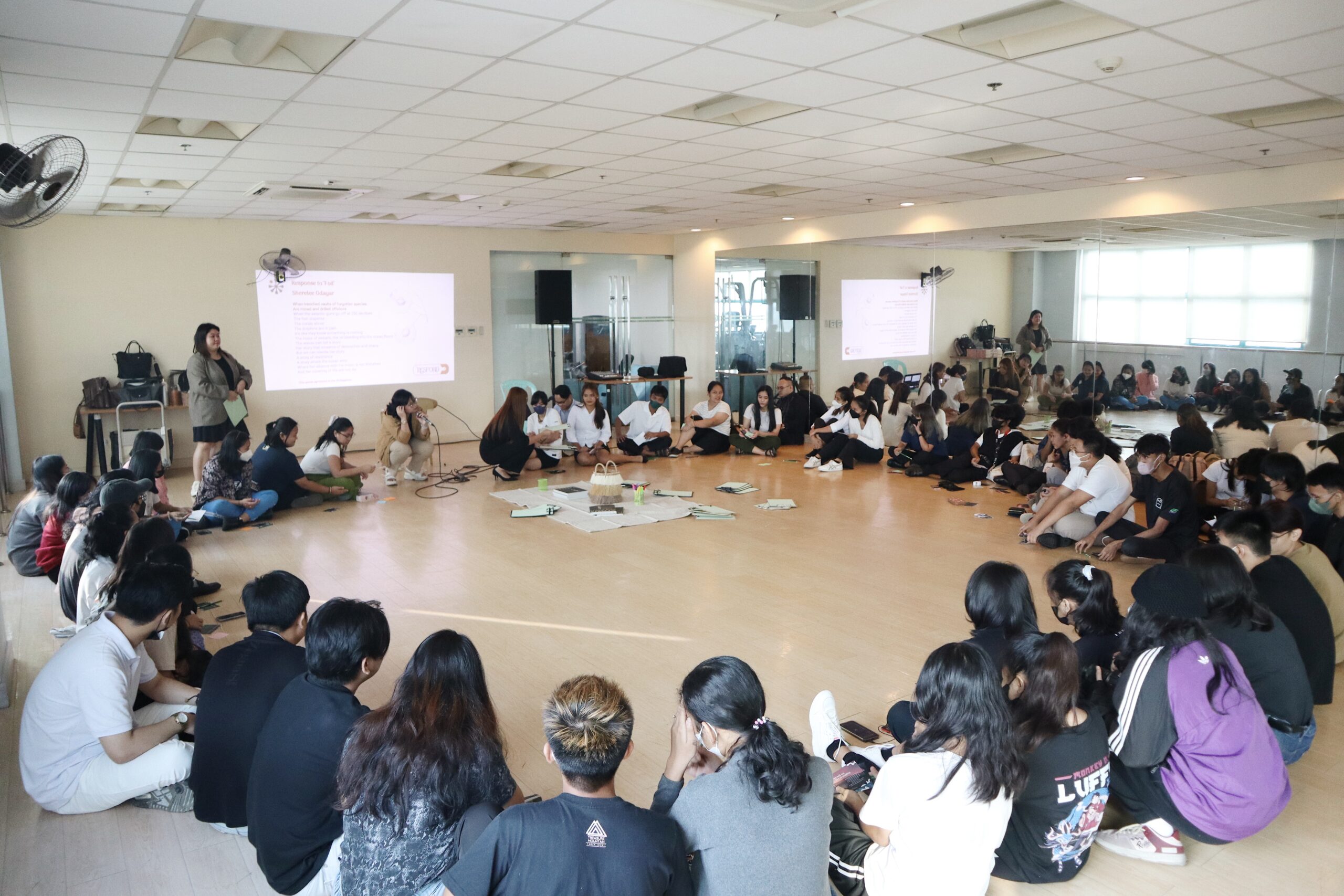Photos: AC Dimatatac © Agam Agenda/Institute for Climate and Sustainable Cities.
INTRAMUROS, MANILA — Youth, artistic collectives, and climate advocates gathered at the historical memorial in Plazuela de Santa Isabel, Intramuros for a local arts fair, sharing stories and art about collective memory and hope in the midst of the climate crisis.
Organized by the Agam Agenda, Green Dreams of a Generation, 350Pilipinas, and Youth Advocates for Climate Action-Philippines (YACAP), the arts fair entitled ‘Taking Root’ brought together young creatives and climate advocates who exhibited books and visual artworks, and performed music and poetry for climate action.
More than ever, climate movements need to be invigorated with art and storytelling. Culture and the arts help us envision collective realities, and culture must have a central role in building resilient futures.
The local arts fair happened in the context of the 27th United Nations Climate Change Conference (COP27) in Egypt. The biggest international conference where environmental policies are negotiated, and world leaders meet to determine climate-related pathways and cooperations of many communities, including addressing loss and damage.
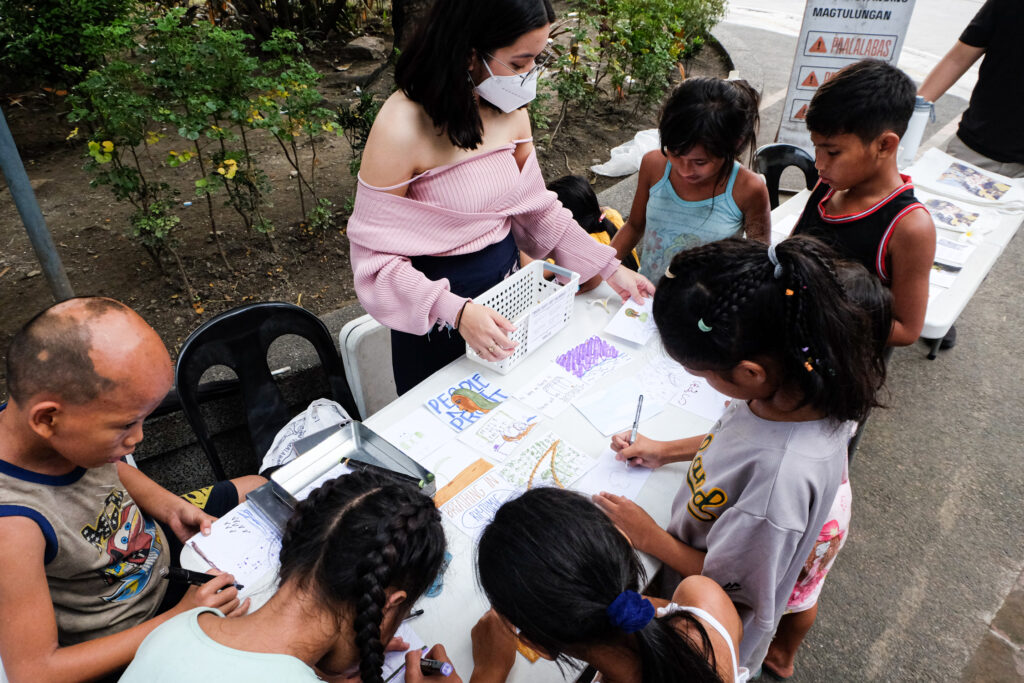
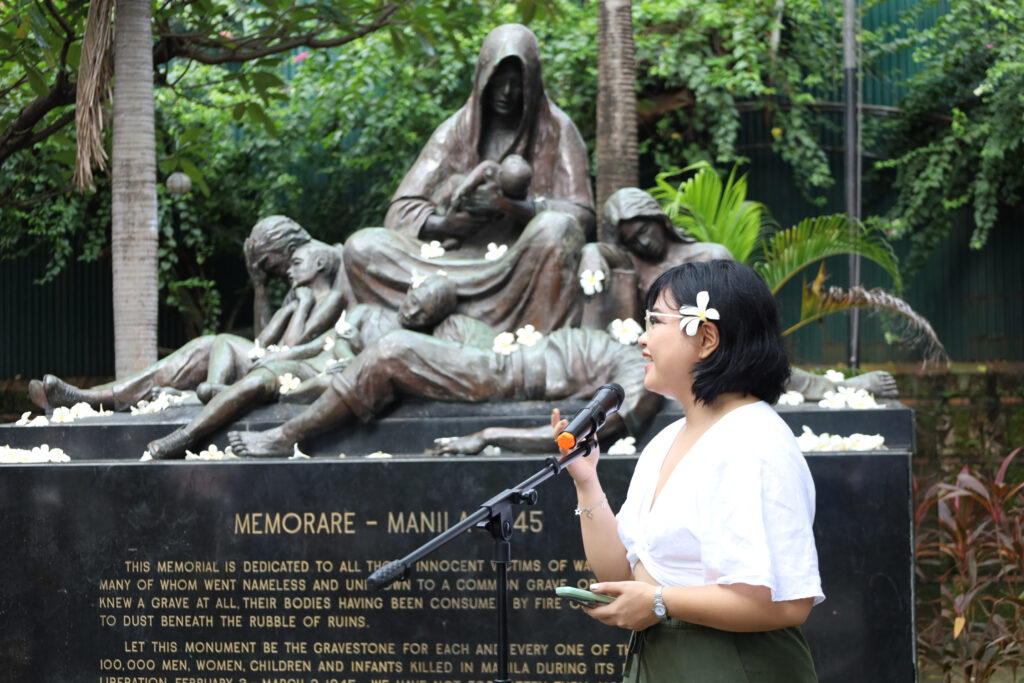
Local artists, creative poets, and climate advocates featured their work focusing on climate and social issues during ‘Taking Root: Arts Fair and Exchange on Memory and Hope’, an arts fair held at the Memorare Manila Monument, Intramuros, Manila on November 13, 2022.
During the arts fair, Carissa Pobre, writer and Strategist for Creative Communication of Agam Agenda, spoke about the role of culture in creating viable futures for all. Sharing more about Agam Agenda’s campaign and thrust on ‘rewriting’ COP, she said on behalf of the group: “Culture is not an add-on to socio-ecological factors considered primordial in allowing communities to prosper. It is precisely the system of values and beliefs that encompasses individuals, collectives, and environments, which manifests itself in profoundly different ecological consequences.”
“And while culture—in the sense of living cultures—gives us our framework for relating to the places we inhabit, culture in the sense of creative expression assists us in interpreting (and reinterpreting) our world, and in communicating our visions with each other.”
“Culture lives outside any walls and any conference. But there is a responsibility that comes with occupying spaces of power as well. As world leaders and decision-makers meet to determine the fate of many communities, the contributions of culture need to be spotlighted as valuable knowledge sources for collectively reimagining and creating paths towards regenerative planetary relationships.”
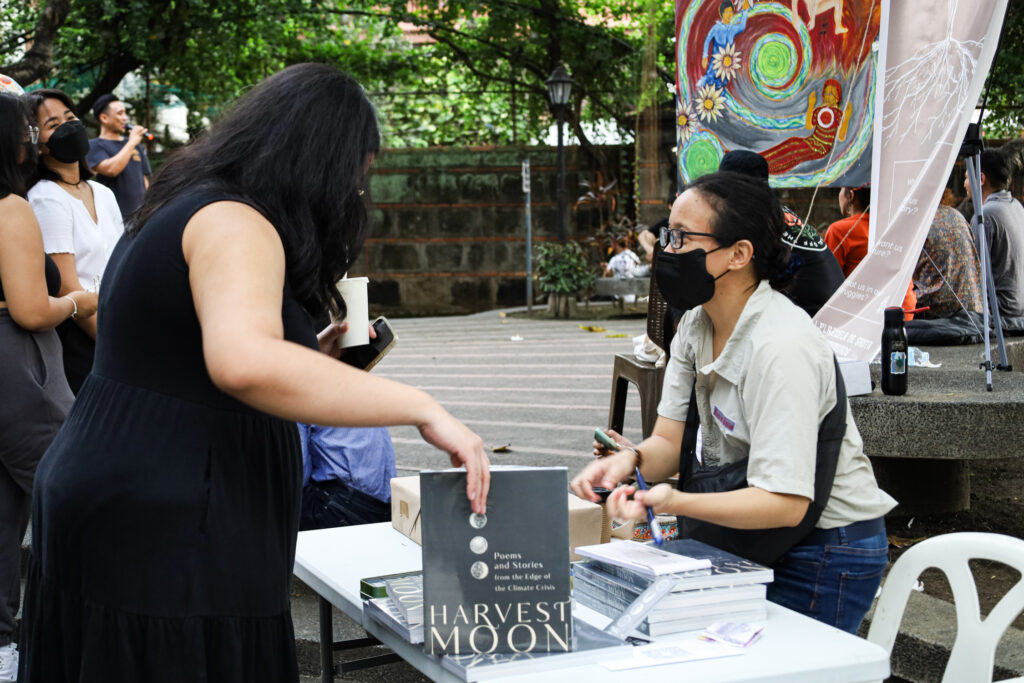
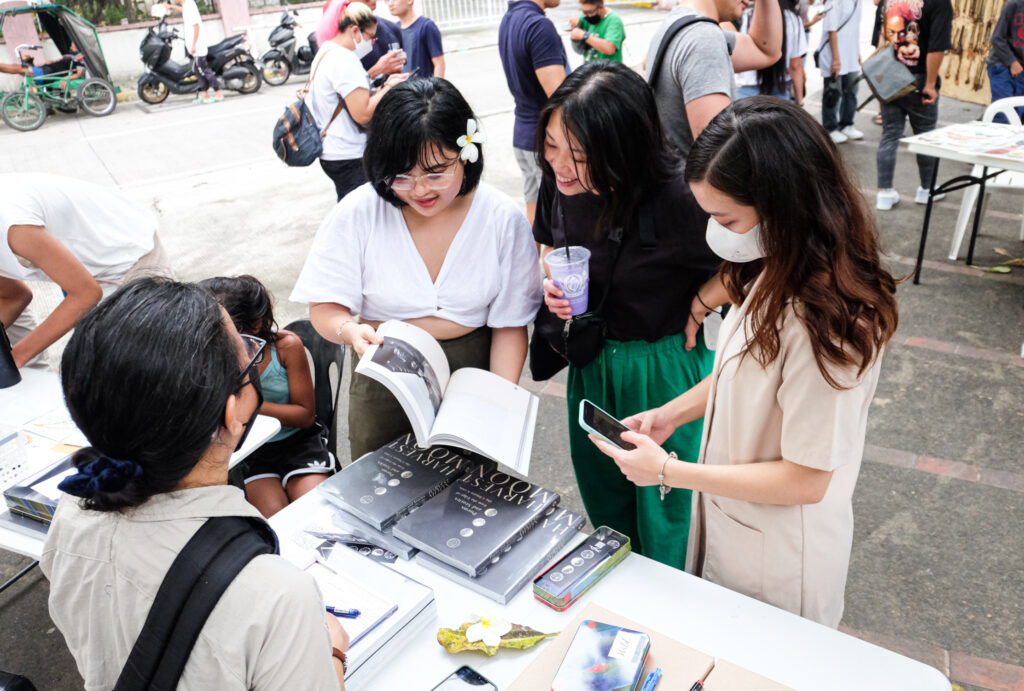
The ‘Taking Root’ arts fair honored historical losses and ecological damages to plant hope for the future in the midst of the climate crisis.
She also shared Harvest Moon, the anthology of climate poems and stories from the Agam Agenda and Institute for Climate and Sustainable Cities. Featuring poetry, prose and photographs across Africa, Asia, the Pacific, and Latin America, the book highlights people’s lived experiences of the climate crisis without technical jargon, and is being shared in various places around the world including Washington DC and Punta del Este, Uruguay.
Faye Cura, writer and founder of Gantala Press, Filipina feminist publisher, spoke about women throughout history, and the need to remember and commemorate their lives and contributions.
Climate activist Johnny Guarin and balikbayan rapper Sobrang Itm also performed music and spoken word poetry as part of the creative storytelling program with poets and artists.
The location of the arts fair was pertinent. Each person who stood up to share stood in front of a memorial for the fallen innocents of Manila in World War 2. Adorned with Kalachuchi flowers, the memorial urged all who were there to remember a distinct moment in Philippine history.
Maria Veloso, founder of Green Dreams of a Generation PH—a Filipino youth organization focused on storytelling for climate justice—shared on memory and hope in the context of the struggle for climate justice. “The memorial holds a time capsule which says to open in 2045. We are closer now to 2045 than we are to 1945, when the events of the memorial occurred” she said. Maria spoke about time and how she nurtures hope even when she feels the urgency of the climate crisis keenly. “I’ve expanded the timeframe of our struggle beyond my own life. I have hope because while I don’t think things will get better in my lifetime, I know for certain they will in the next generations, someday. Our actions right now are planting seeds and paving the way for that future.”


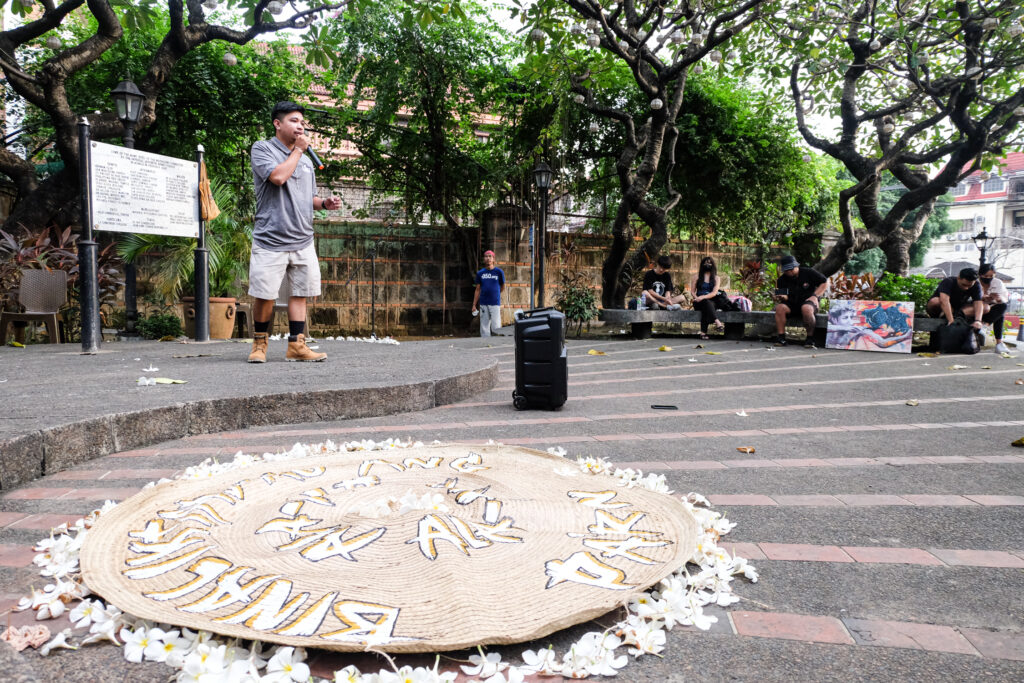
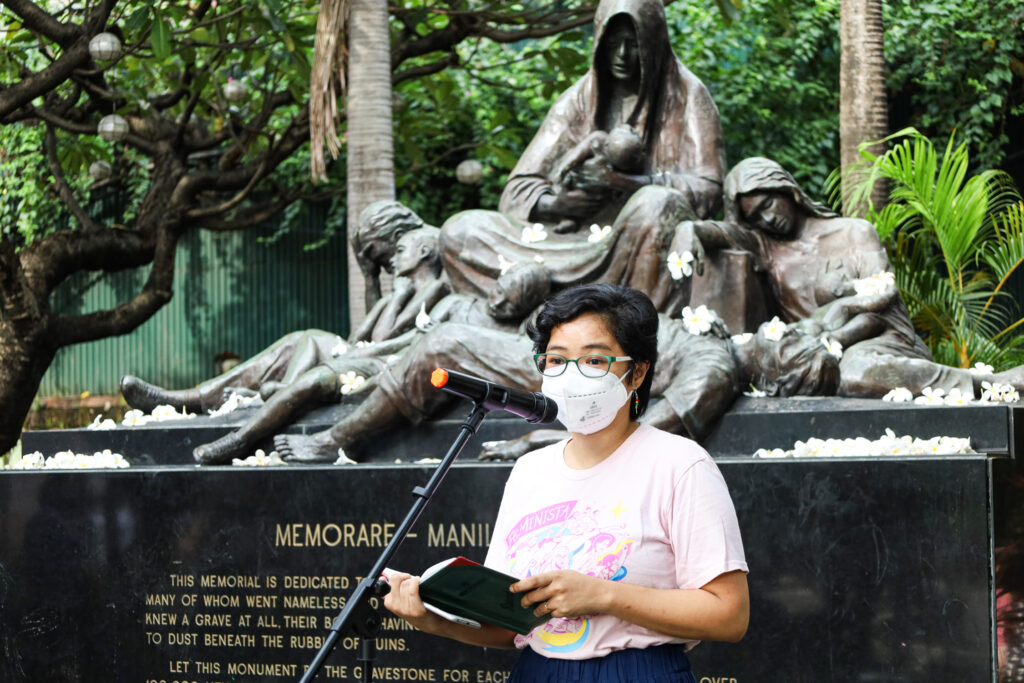
As COP27 international negotiations are ongoing in Egypt, particularly to address key issues such as loss and damage, young artists and climate advocates including Agam Agenda, Green Dreams of a Generation PH, and 350 Pilipinas came together to invigorate local climate movements with storytelling and creativity.
The official agenda at COP27 in Sharm El-Sheik, Egypt includes just a handful of events centered around the role of culture—and cultures—in climate action.
In an arena dominated by economic and technical solutions (also called ‘technofixes’, ranging from carbon capture technology to geoengineering), the attention and resources given to socio-cultural concerns, including the preservation of local knowledges and Indigenous stewardship, comes close to last.
Green Dreams of a Generation seeks to amplify the voices of the Filipino youth, the future ancestors, through storytelling. They are actively collecting short stories, poems, and other creative writing to publish a youth-led climate anthology in 2023. The anthology will invigorate the movement of climate justice advocates, in the Philippines and internationally, and strengthen ties among fellow Filipinos in the motherland and the diaspora. For more information, visit their submission guidelines or website.
Agam Agenda seeks to bring arts and culture into climate discussions through their ongoing campaign When Is Now, and place the spotlight on the integral role played by cultural expression in long-standing change. With the transdisciplinary collaboration of visual artists and poets from across the globe, When Is Now has put together a collection of stories that reflect the lived experiences of those at the forefront of the climate crisis. For more information, visit whenisnow.org.
